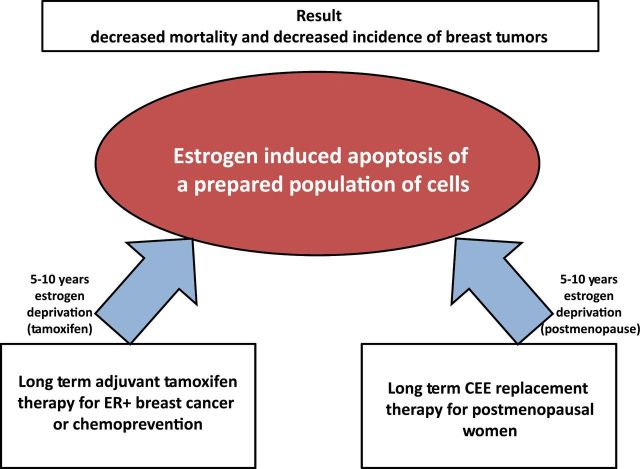Figure 4.
The symmetry of the results from conjugated equine estrogen (CEE) trial of the Women’s Health Initiative (93) and long-term tamoxifen action (16). The hypothesis to address is that both require at least five years of estrogen deprivation to trigger estrogen-induced apoptosis. In the case of CEE and the historical use of high doses of estrogen therapy for breast cancer, both approaches require an interval of at least five years postmenopause to achieve an optimal 30% tumor response rate. Five years of tamoxifen produces an optimal result during treatment to create estrogen deprivation in the microtumor environment by ER blockade; but both tamoxifen and CEE produced sustained decreases in mortality after treatment. Microfoci of estrogen-deprived cells are killed by estrogen by the woman’s own estrogen or by CEE treatment in a woman during her 60s, respectively. The fact that CEE causes a decrease in incidence and mortality in women in their 60s provides a prima facia case that the estrogen deprivation created by long-term tamoxifen therapy creates vulnerable cell populations that can respond to estrogen with an apoptotic response to affect sustained cures. ER = estrogen receptor; CEE = conjugated equine estrogen.

